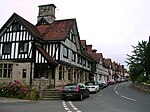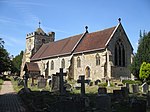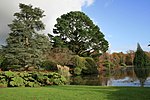Piltdown
East Sussex geography stubsFletchingHamlets in East Sussex

Piltdown is a series of hamlets in East Sussex, England, located south of Ashdown Forest. It is best known for the Piltdown Man hoax where amateur archaeologist Charles Dawson claimed to have discovered evidence of the "missing link" in gravel beds near the village.Piltdown has a pub ("The Piltdown Man", after temporarily being called "The Lamb"), a golf course, and a vineyard. It is in the Wealden district and Fletching parish.
Excerpt from the Wikipedia article Piltdown (License: CC BY-SA 3.0, Authors, Images).Piltdown
Goldbridge Road, Wealden Fletching
Geographical coordinates (GPS) Address Nearby Places Show on map
Geographical coordinates (GPS)
| Latitude | Longitude |
|---|---|
| N 50.982 ° | E 0.051 ° |
Address
Goldbridge Road
TN22 3XL Wealden, Fletching
England, United Kingdom
Open on Google Maps








